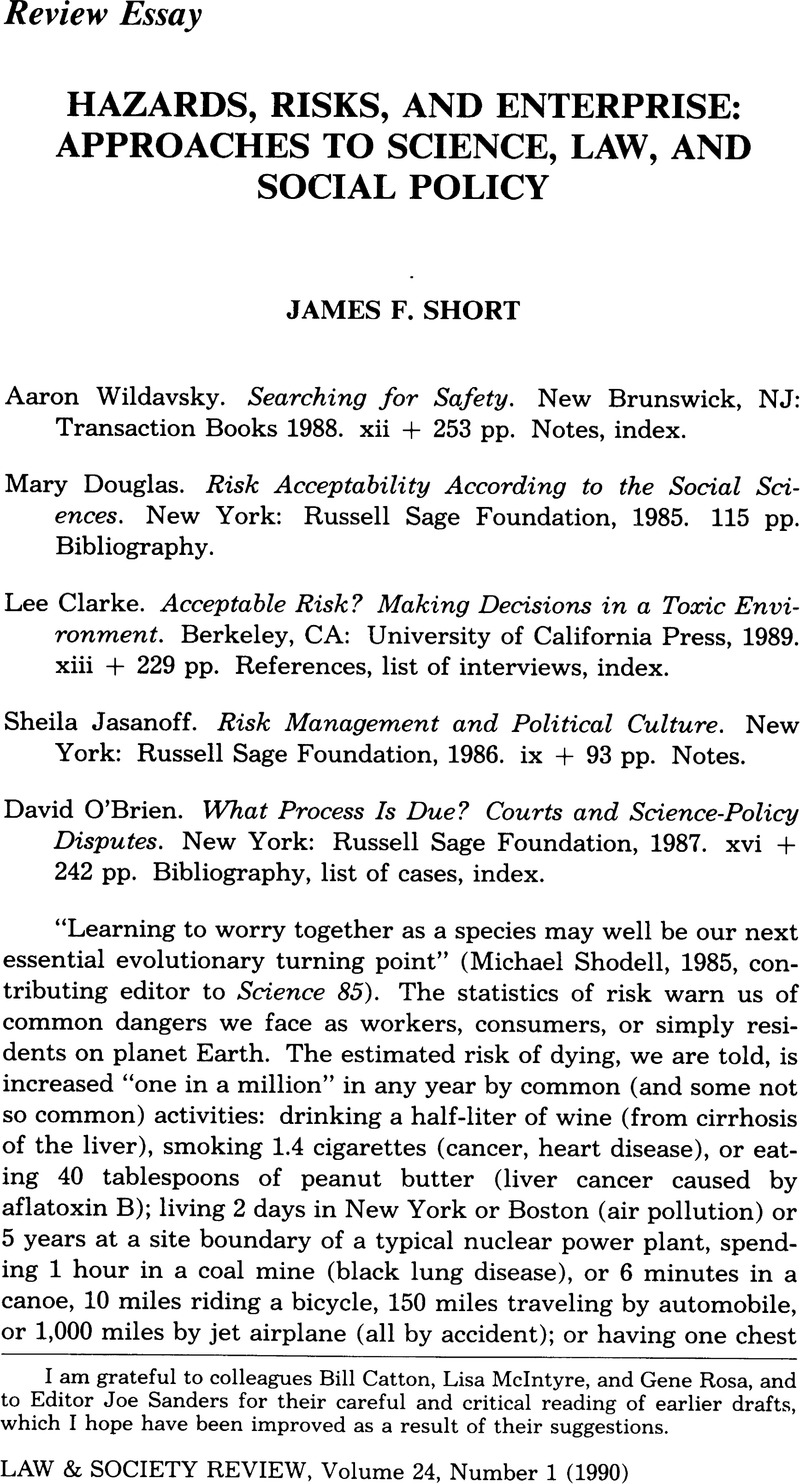Article contents
Hazards, Risks, and Enterprise: Approaches to Science, Law, and Social Policy
Review products
Published online by Cambridge University Press: 01 July 2024
Abstract

- Type
- Essays
- Information
- Copyright
- Copyright © 1990 Law and Society Association.
Footnotes
I am grateful to colleagues Bill Catton, Lisa McIntyre, and Gene Rosa, and to Editor Joe Sanders for their careful and critical reading of earlier drafts, which I hope have been improved as a result of their suggestions.
References
- 4
- Cited by




